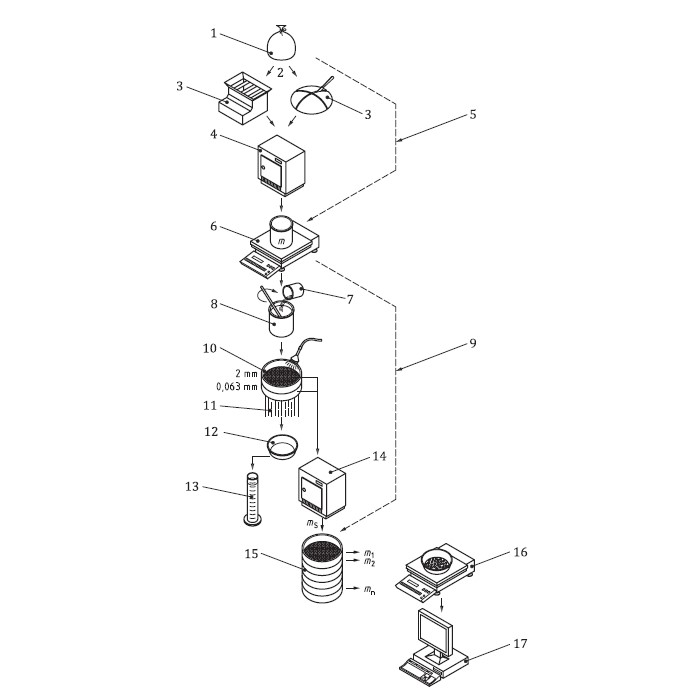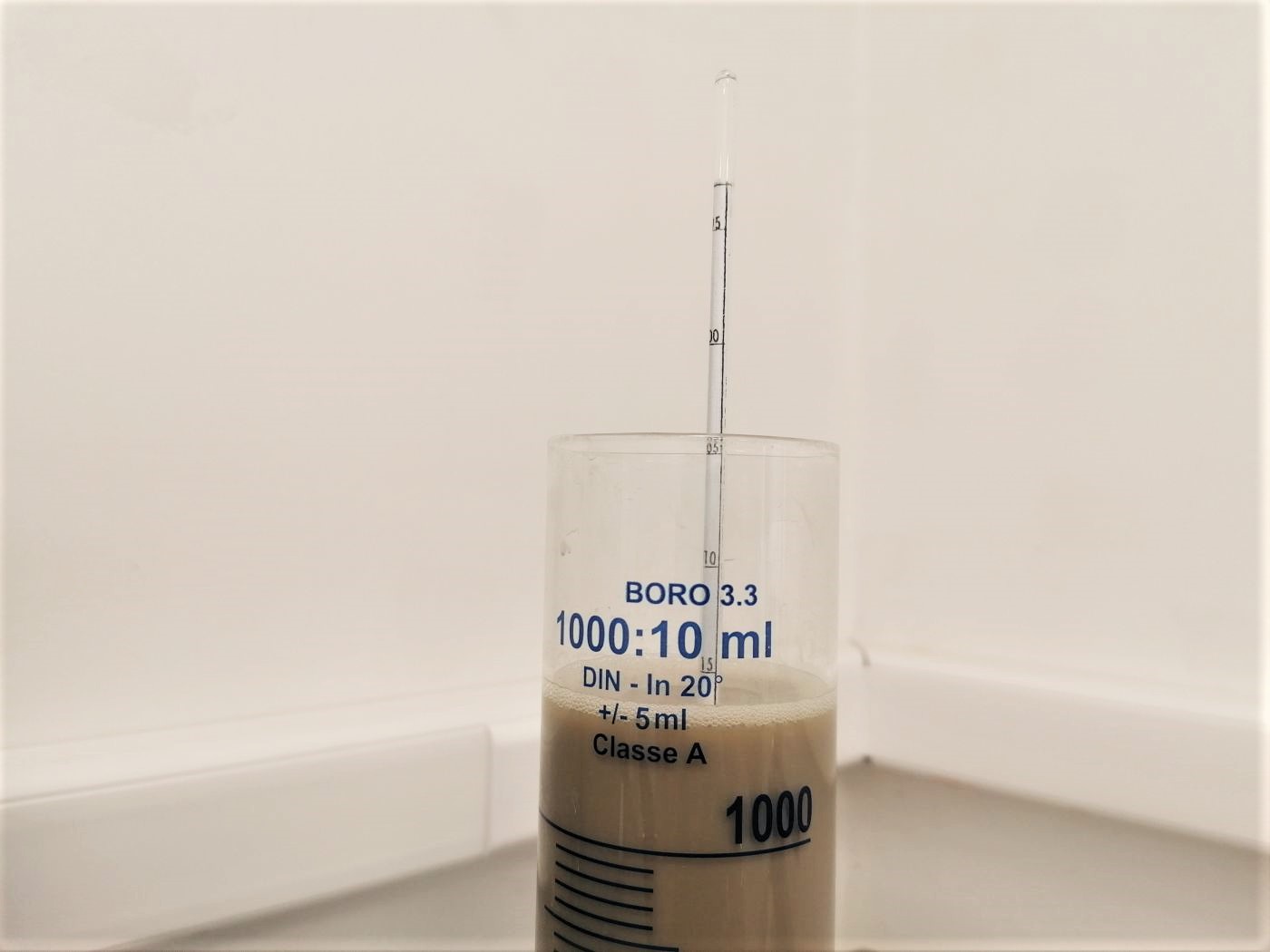Grain size analysis
All soils consist of differently sized and shaped particles (grains). These particles are grouped into size intervals (fractions). The distribution of fractions makes up the granulometric composition of soil (Latin granulum – small grain).
The granulometric composition or particle size distribution of soil is one of its basic descriptive parameters, used for evaluating the physical and mechanical properties of soil and classifying soil, as well as either an indicator or a realistic measure for evaluating if soil is fit for a planned intervention.
Larger fractions are determined by sieving, while smaller fractions undergo the hydrometer method or simply put, sedimentation.

When dealing with coherent soil, pretreatment may be necessary. The aim of the pretreatment is to remove any organic particles or calcitic bonds, as their presence can interrupt the analysis procedure and yield imprecise results. Likewise, the hydrometer method requires anticoagulant treatment. This is because suspended smaller particles stick to each other and form larger particles, a process called flocculation. An anticoagulant will ensure particle dispersivity, in order to avoid significant errors in measurement.
The analysis is conducted on a representative sample. A larger mass of soil is divided into smaller parts, and out of these a sample of adequate quality is selected and used for analysis.
Grain size analysis can be conducted in three ways:
- through the analysis of incoherent soil by sieving, for samples with little or no smaller particles (less than 10% of the sample is smaller than 0.063 mm);
- through the analysis of coherent soil by hydrometer method, for samples with only sporadic larger particles (all sample is smaller than 2 mm, and less than 10% of the sample is larger than 0.063 mm);
- through a combination analysis, for samples consisting of both large and small particles (e.g., clayey gravel or silty sand)
Sieving
Sieving is a procedure used to determine the quantity of gravel and sand fractions in a given soil.
Sieves of different aperture sizes are stacked in a desired sequence. Sieving can be performed by hand or using a mechanical sieve shaker. Incoherent soil with no smaller particles needs to undergo the dry sample method, while combination soil requires washing (wet sample method) which removes particles smaller than 0.063 mm. After the washed sample dries, it may be sieved according to the dry method.


Hydrometer method
The hydrometer method is a procedure used to determine the quantity of silt and clay fractions in a given soil. It is named after the hydrometer, an instrument used to measure fluid density (e.g., the density of a soil suspension).
The measured density, the depth at which it was measured, and the sedimentation time make it possible to determine particle diameter and its quantity.
This procedure is based on Stokes’ law, an expression for drag force exerted on spherical objects with very small Reynolds numbers (very small particles) in a viscous fluid. This expression is used to determine the velocity of a sphere falling in fluid:

where ν is the particle’s velocity, D is the radius of the particle, ρS is the particle density, ρL is the fluid density, μ is the dynamic viscosity, and g is the gravitational field strength.
Water content is determined separately and used as a mass correction factor.
The sample is treated with an anticoagulant or dispersing agent solution, followed by the removal of particles over 2 mm in size. The soaked sample is then transferred into a sedimentation cylinder. The hydrometer is placed into the soil suspension, and readings are taken from the hydrometer meniscus after predetermined periods of time, up to 24 hours. Additionally, temperature readings are recorded after every hydrometer reading.


Test results
The test results are most often presented in graphical form, as a granulometric curve. The curve can be used to visually estimate certain parameters such as the coefficient of curvature (Cc) and the coefficient of uniformity (Cu), which are also expressed quantitatively. Grain diameters with the percentage of sample grain (d10, d20, d30 and d60) below them are often shown, as well as the share of basic soil groups in the sample.

*References:
Jocković, S. (2022): Mehanika tla, Građevinski fakultet, Univerzitet u Beogradu
HRN EN ISO 14699-1 (2018): Geotehničko istraživanje i ispitivanje – Identifikacija i klasifickacija tla – 1. dio: Identifikacija i opis
HRN EN ISO 17892-4 (2016): Geotehničko istraživanje i ispitivanje – Laboratorijsko ispitivanje tla – 4. dio: Određivanje granulometrijskog sastava
Mulabdić, M. (2018): Ispitivanje tla u geotehničkom laboratoriju, Građevinski i arhitektonski fakultet, Sveučilište Josipa Jurja Strossmayera u Osijeku
Read more: Laboratory testing of rock mass strength, Oedometer soil test
